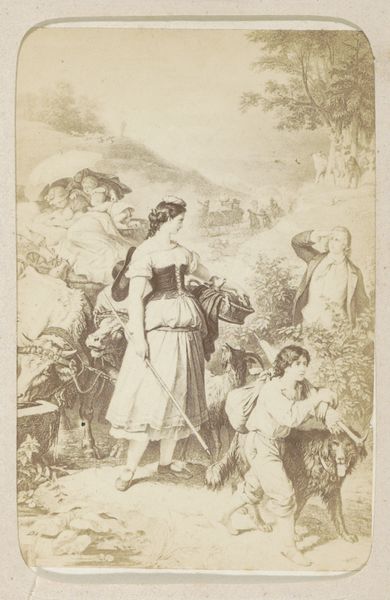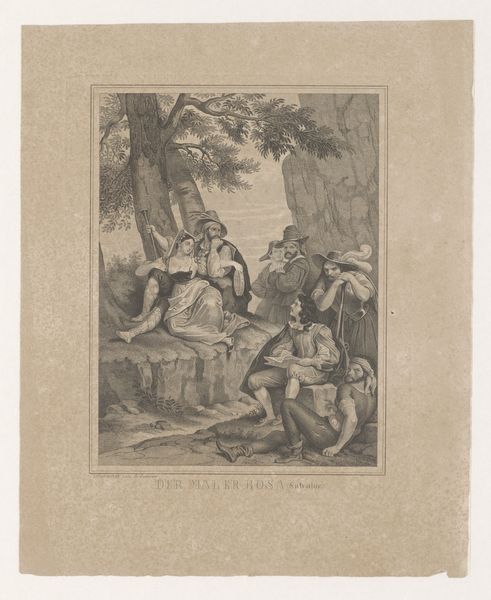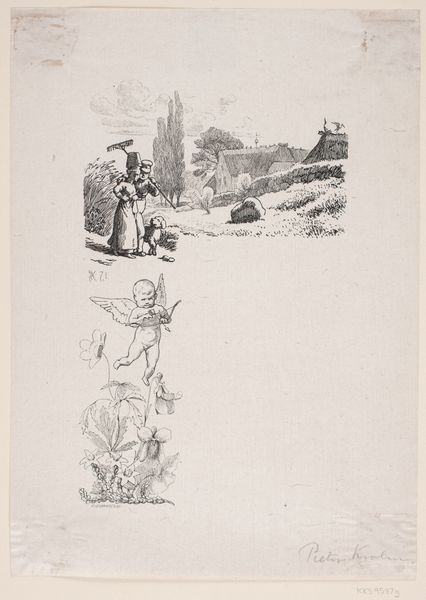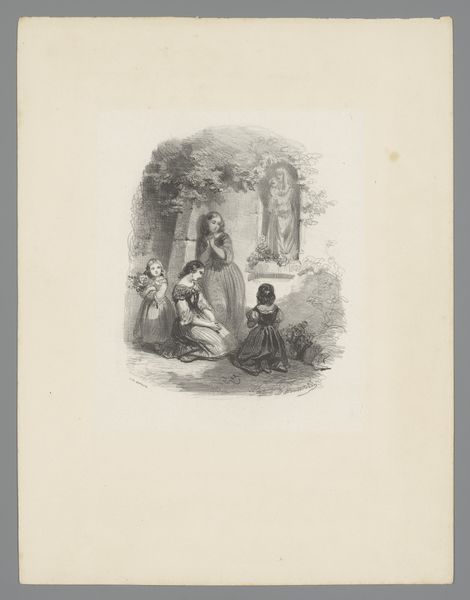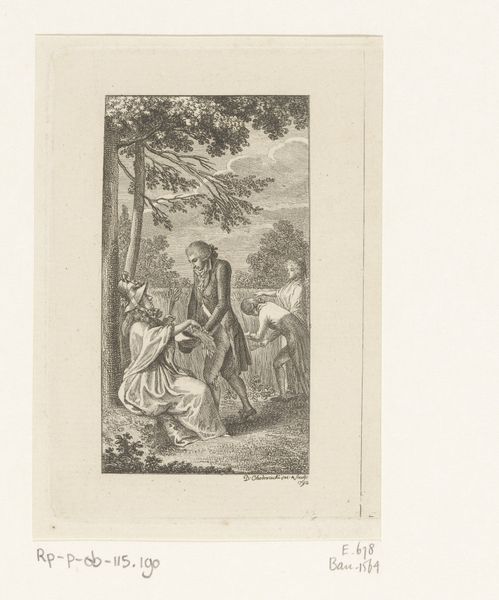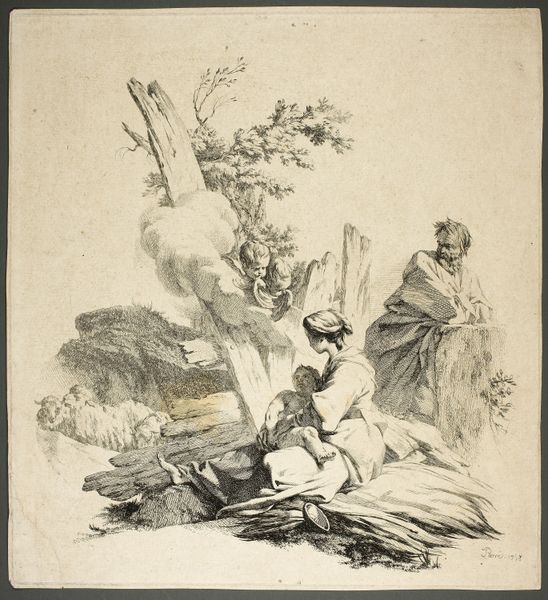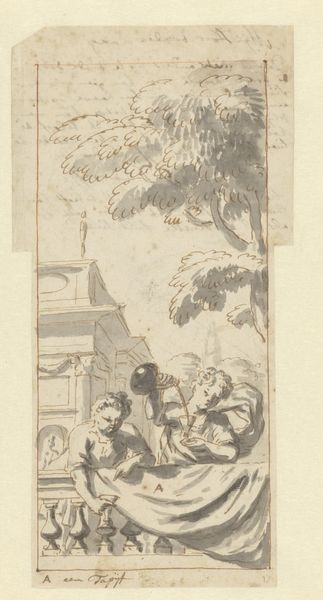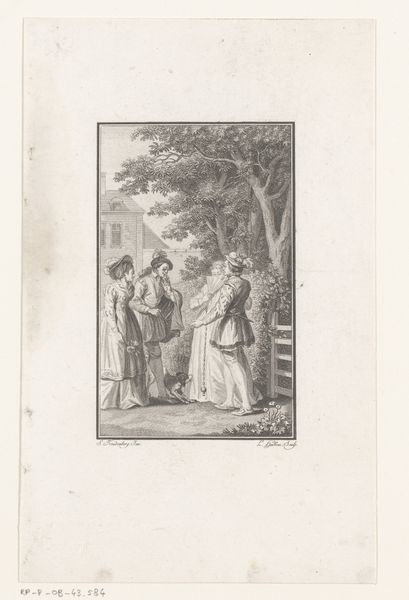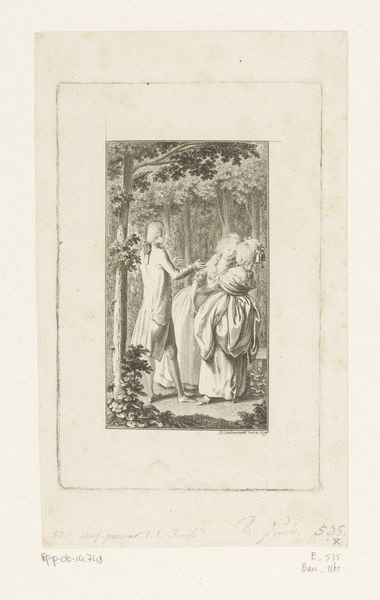
Plünderer an einer antiken Stätte, vom Laubwerk verdeckt eine Sphinx
0:00
0:00
drawing, paper, ink
#
drawing
#
baroque
#
landscape
#
figuration
#
paper
#
ink
#
15_18th-century
#
history-painting
Copyright: Public Domain
Curator: Christian Wilhelm Ernst Dietrich's ink drawing, "Plünderer an einer antiken Stätte, vom Laubwerk verdeckt eine Sphinx," presents us with a fascinating scene. Editor: My first impression is one of subdued drama. The tonal range is so narrow, a delicate wash really, it lends a sense of melancholic discovery. Curator: The composition employs a striking contrast. We see figures actively looting amidst decaying classical architecture and the ever-enigmatic sphinx. How does this tension manifest? Editor: Formally, the clustered figures on the left offset the temple structure behind the foliage on the right, which creates visual weight. It suggests that what's been forgotten might be heavier than recent actions of pillaging. Semiotically speaking, the broken columns allude to what used to stand. The active 'plunderers' might stand in contrast to a past society, yet their interaction remains ambiguous. Curator: Interesting take, focusing on the binary structures, whereas I'm curious what Dietrich intended, perhaps to highlight a temporal transition. Consider that artworks featuring similar classical subject matter served the aristocratic classes for generations. Does the choice of medium suggest accessibility or perhaps a critique? Editor: Yes, its positionality surely needs interrogation. Is this drawing accessible in ways an oil painting never could be? Did the burgeoning bourgeoisie and expanding middle classes now desire to be the arbiters of taste as culture democratized and centralized in national museums? Curator: Furthermore, we could evaluate this artwork as an extension of social history. We can decode what these plunderers could mean in a broader social context. The formal layout—that is, how it looks and feels aesthetically—reveals further depths of knowledge and understanding. Editor: A worthwhile journey into aesthetics, and the artwork can thus facilitate understanding by bringing together technique and social insight. Curator: Indeed, I am appreciative of our reflections. This drawing presents a valuable discourse across history, formal structure and historical relevance.
Comments
No comments
Be the first to comment and join the conversation on the ultimate creative platform.
